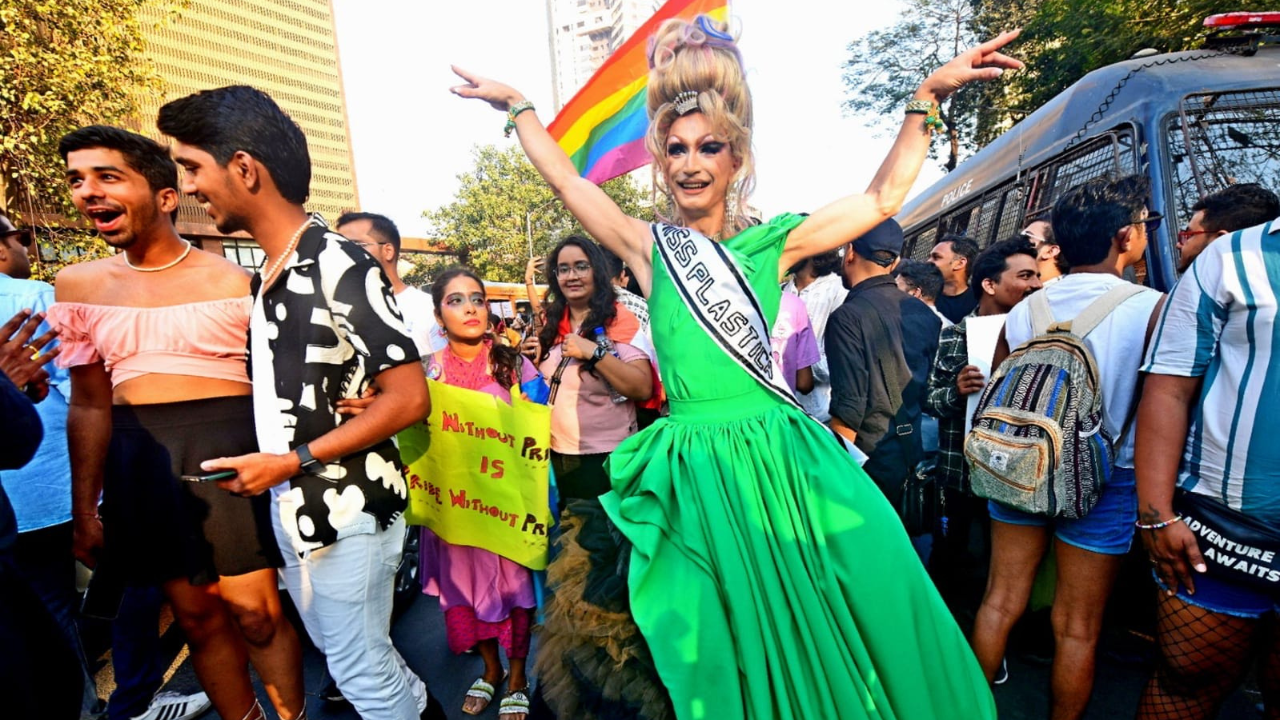MUMBAI: Surging through midtown Mumbai on Saturday evening, the Mumbai Pride march returned to the streets after a four-year long gap commencing from August Kranti Maidan in Tardeo before winding through Nana Chowk, Lamington Road, Opera House, Kennedy Bridge and culminating at the starting point.
Difficulty with police permissions and the pandemic had put a pause on the parade that has been an expression of equal rights for LGBTQ+ individuals and communities in the city since 2005.
“Today is a day of reflection for the cis-het community. There is so much that some get without asking, all of which is denied to the queer community – the right to marry, the right to adopt, the right to live a discrimination free life. Despite the milestone of overturning Section 377, it’s history. Until even one queer person in our city is unable to live their lives as their authentic selves we have reason to take to the streets,” said queer rights advocate Harish Iyer.
This year, the parade welcomed participation from communities advocating for various causes beyond queer rights. “We aimed to spotlight the lesser-known intersections of other rights and causes with queer rights be it the deaf community or animal rights organisations,” elaborated Iyer. During the procession through silent zones, the parade respectfully quieted down to honour those who lost their lives to queer phobia.
Blending celebration with a call to action, advocates pushed for essential rights, including marriage equality and adoption, robust anti-discrimination and anti-violence laws, establishment of welfare boards and councils to safeguard transgender rights and demand an end to stigma and discrimination against individuals living with HIV.
Leading up to the march, a month-long lineup of events — workshops, panel discussions, film screenings, book readings and discussions between families, colleagues, journalists, and counsellors set the stage for dialogue and learning. A host of performances, including a drag ball and a youth festival explored the power of art in building respect across gender and sexual norms.
Difficulty with police permissions and the pandemic had put a pause on the parade that has been an expression of equal rights for LGBTQ+ individuals and communities in the city since 2005.
“Today is a day of reflection for the cis-het community. There is so much that some get without asking, all of which is denied to the queer community – the right to marry, the right to adopt, the right to live a discrimination free life. Despite the milestone of overturning Section 377, it’s history. Until even one queer person in our city is unable to live their lives as their authentic selves we have reason to take to the streets,” said queer rights advocate Harish Iyer.
This year, the parade welcomed participation from communities advocating for various causes beyond queer rights. “We aimed to spotlight the lesser-known intersections of other rights and causes with queer rights be it the deaf community or animal rights organisations,” elaborated Iyer. During the procession through silent zones, the parade respectfully quieted down to honour those who lost their lives to queer phobia.
Blending celebration with a call to action, advocates pushed for essential rights, including marriage equality and adoption, robust anti-discrimination and anti-violence laws, establishment of welfare boards and councils to safeguard transgender rights and demand an end to stigma and discrimination against individuals living with HIV.
Leading up to the march, a month-long lineup of events — workshops, panel discussions, film screenings, book readings and discussions between families, colleagues, journalists, and counsellors set the stage for dialogue and learning. A host of performances, including a drag ball and a youth festival explored the power of art in building respect across gender and sexual norms.
